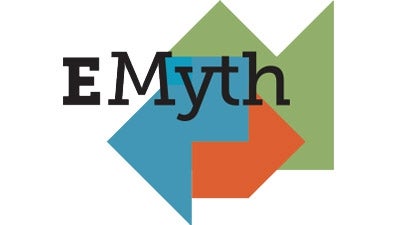Home > Startup > Personal Readiness >
Entrepreneurs Work on the Business as Well as in It
By: Marty Zwilling

Over 25 years ago, Michael E. Gerber wrote a best-selling business book called The E-Myth: Why Most Businesses Don’t Work and What to Do About It. The E-Myth (“Entrepreneurial Myth”) is the mistaken belief that most businesses are started by people with tangible business skills, when in fact most are started by “technicians” who know nothing about running a business. Hence most fail.
Some pundits argue that the E-Myth principle is now outdated, due to the instant access to information via the Internet, pervasive networking via social media, and courses on entrepreneurship at all levels of education. Perhaps an innate business savvy is no longer a requirement for starting a successful business.
Let me assure you that based on my experience, I’m not convinced. I still see too many businesses started by technicians who haven’t acquired the basic skills or knowledge, or still assume that business acumen is a minor part of the new business equation. I also see no evidence that the percentage of new business successes has gone up in the last couple of decades.
I believe that most entrepreneurs today, at least in the technology domains I frequent, still work in the business (“Technician’s Perspective”), rather than on the business (“Entrepreneurs Perspective”). Here are some key ways these views differ:
- The Entrepreneurial Perspective asks the question: “How must the business work?” This perspective looks at the business as the product, competing for the customer’s attention against a whole shelf of competitors. The Technician’s Perspective asks: “What work has to be done?” In this view the product features, cost, and support are the key to success.
- The Entrepreneurial Perspective sees the business as a system for producing outside results for the customer, resulting in profits. The Technician’s Perspective sees the business as a place in which people work to produce inside results for the Technician, producing employee income.
- The Entrepreneurial Perspective starts with a picture of a well-defined future, and then comes back to the present with the intention of changing it to match the vision. The Technician’s Perspective starts with the present, and then looks forward to an uncertain future with the hope of keeping it much like the present.
- The Entrepreneurial Perspective envisions the business in its entirety, from which is derived its parts. What’s important is the business as a whole: how it looks, how it acts, how it does what it is intended to do. The Technician’s Perspective envisions the business in parts, constructed from the bottom up, based on technical tasks.
- The Entrepreneurial Perspective is an integrated vision of the world, where the customer need is an opportunity to make meaning. The Technician’s Perspective is a fragmented vision of the world, where customer satisfaction represents a series of problems to solve, with price, features, availability, and support.
- To the Entrepreneur, the present-day world is modeled after a vision of a better way, one that will stand out with customers from all the rest in the past, and give the joy and satisfaction of success. To the Technician, the future is modeled after the present-day world, the model of past experience, and the model of getting paid for effort or results.
The challenge of every Entrepreneur and Technician is to maintain the right balance of views to get things done, win in the marketplace, and keep everyone happy. As startups grow, they quickly realize that they need a third personality, called the Manager, to build systems and processes. The Manager craves order, and often ends up cleaning up after the other two.
Perhaps someday our education system and other resources will facilitate everyone starting a business to have that balanced view, but I don’t see it happening any time soon. In the interim, I recommend you use social media and the Internet to find your alter-ego. Two heads are still better than one, to get the right business started, and get it started right, without worrying about the E-Myth.
This article was originally published by Startup Professionals
Published: November 11, 2014
2406 Views
2406 Views












